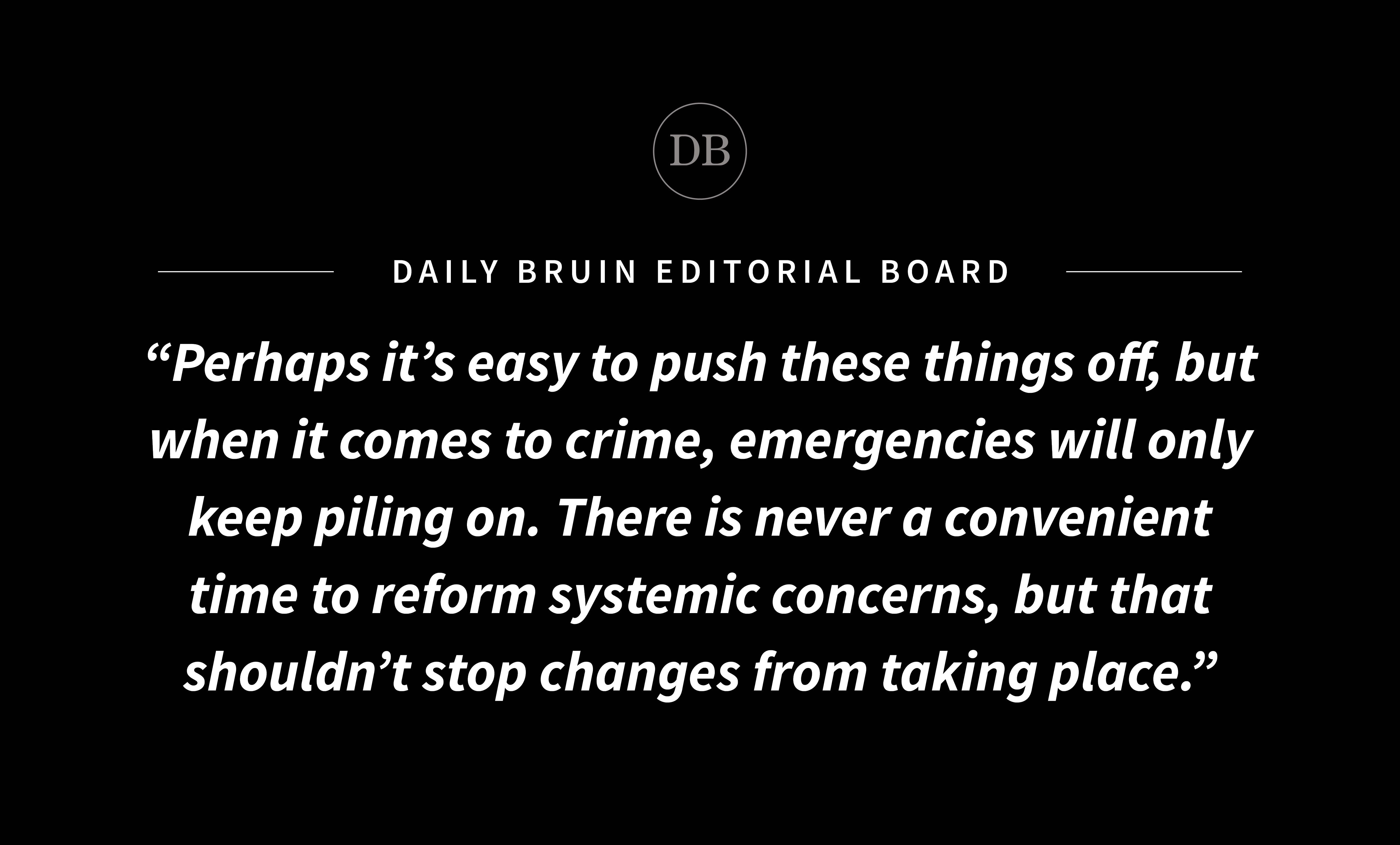Editorial: UCLA must emphasize student safety through increased communication, safety measures

By Daily Bruin Staff
Jan. 5, 2020 10:30 p.m.
UCLA has a responsibility to fix issues on its own doorstep. But when it fails at that, the university should at least attempt to provide students with a sense of security.
It seems, however, that even acknowledging the recent uptick of crime around campus is more than administrators are willing to do.
This inaction comes on the heels of two sexual batteries and two physical assaults that occurred on university property in early December.
Students receive UCPD Clery Timely Warnings whenever UCPD determines that there is a serious or ongoing threat to the campus community, but the university rarely follows up.
Students deserve to feel safe on the campus they call home. But when the university fails to communicate with the student body about this unprecedented wave of assaults, that safety feels increasingly false. Timely Warnings serve as an effective line of communication with students, but the recent pattern of assaults requires more than the usual alerts and precautions. The university needs to address and acknowledge this as an issue – and a commitment to improve wouldn’t hurt either.
And it’s not like the university doesn’t have options.
The university has blue emergency phones scattered around the campus and Westwood that are meant to provide students in danger with a fast access point to emergency services. Then again, only 27 stations exist on a campus of about 45,000. The University of Central Florida boasts over 200 emergency phones. At UC Berkeley, over 100 exist on campus.
The position of a public university includes the inherent complications of having a campus open to the public. But an open door policy also necessitates attention to student safety – and UCLA is doing a disservice to its students by ignoring the importance of open communication and continuous improvement.
And beyond on-campus security measures lies the Hill.
Certain residence halls have Housing Access Control, which is meant to keep out people who don’t live in a building, but that hasn’t stopped crimes from occurring in such areas. One of the recent crimes was committed inside a dorm building that required keycard access.
And Access Control has run short-staffed before. Moreover, not every building on campus has Access Control, and even those that do have it during limited hours.
Perhaps it’s easy to push these things off, but when it comes to crime, emergencies will only keep piling on. There is never a convenient time to reform systemic concerns, but that shouldn’t stop changes from taking place.
Security can be a sensitive topic, to say the least. Criticisms of increased security camera usage have sparked town hall debates, and privacy concerns became a common theme among students during the proposed implementation of Policy 133. No students want Big Brother watching, but UCLA would have a long way to go before it got there.
Because as of now, even vague reassurance seems out of the question.
UCPD and UCLA can’t stop every crime. But they certainly can take a moment to look around and realize that students are being left in the dark.
And if the university wants to light the way in 2020, they would do well to start with some improved communication.


